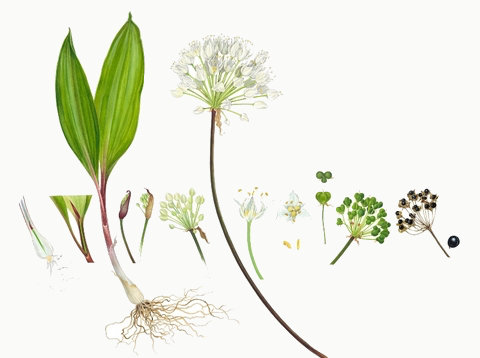Wild garlic
The source of the conflict between garlic and your gut is the abundance of fructose type sugars stored in the flesh of the clove. There’s good reason for this, fructose is a far more efficient medium in which to store energy than glucose is. Plants store energy as chains (poly-saccharides) of fructose units linked together. Unfortunately you’re intestines are largely unmoved by the delicate thermodynamic balances of nature and react badly to the presence of these concentrated fructose containing poly-saccharides.
Wild garlic is a woodland plant that grows in Asia and Europa, it is a firm favourite of brown bears and wild boars. It is also a fantastically flavourful, aromatic and fresh alternative to garlic bulbs. It will not do the same thing as garlic and shouldn’t be cooked in the same way, but as we are interested in using the leaf rather than the bulb, we don’t have to deal with the fructose problem and we have certainly found that wild garlic leaves are fodmap friendly.

Wild garlic grows in the spring time on woodland floors. It has a relatively short an joyous period of growth, between the ending of the winter and the time when the tree canopy develops fully, restricting sunlight reaching the plant. During this burst the hillsides can covered with leaves cascading off the verges. Its a fantastic time to get out foraging in the woods.
A note of caution, wild garlic leaves have a similar appearance to some poisonous plants, like lily of the valley. The picture above helps to identify the real deal.* Luckily wild garlic also smells strongly of garlic/onion and is easily confirmed this way.
Over the coming weeks we’ll post a series of delicious wild garlic recipes, including garlic butter, pesto, soup and more.
*This beautiful image is taken from the American Society of Botanical artists website and is copyright of Derek Norman. If the owners of the image have any issue with us using it here, please contact us and we will remove it immediately.
wild_garlic garlic recipes fodmap 